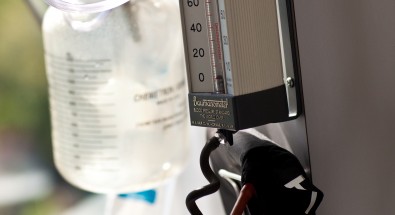Replacing One Tooth
If you have a missing tooth in the upper or lower jaw, talk to your surgeon about whether a dental implant is a solution for your situation. A dental implant with a crown mounted on top may be the best choice for your mouth. The implant is designed to replace the missing root of the tooth and to act as the support for the crown. Therefore, your healthy neighbouring teeth do not have to be cut down and can remain healthy.
Step by Step
Step 1
The missing tooth may be the result of dental decay, or an accident, or simply because it was missing since birth.
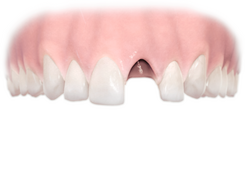
Step 2
The dental implant is inserted into the jawbone under local anesthesia or with conscious sedation. It is a relatively simple procedure with quick recovery. The adjacent healthy teeth are not ground down or damaged with other replacement solutions such as a bridge.
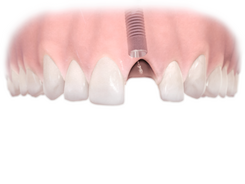
Step 3
The dental implant has an abutment attached to it. This abutment allows the crown to be connected to the implant and it is positioned perfectly at the edge of the gum. It will look like the implant crown tooth is coming out of the gums, just like the natural teeth.
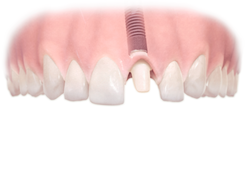
Step 4
The new tooth is now complete and it is virtually impossible to see the difference between the existing teeth and the new tooth.
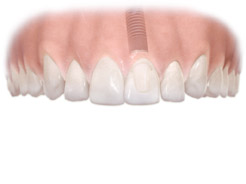
Treatment Overview
Diagnosis and a thorough examination
The first step in dental implant treatment is a discussion with your oral surgeon. Dr. Aidelbaum and Dr. Chen will determine whether implants are the right solution for you by taking X-Ray images and computer tomography and conducting a thorough clinical examination. We have the special three-dimensional imaging technology to evaluate the quantity of your bone and the ideal placement of your future dental implant. They will speak to your restorative dentist to formulate the ideal plan for your clinical situation.
Inserting the dental implant
The implant is inserted under local anesthesia or intravenous sedation. Depending on your clinical situation, your oral surgeon may give you two options with respect to the placement of your dental implant. The first option is a one-step procedure where the dental implant is inserted a temporary abutment is immediately attached. The second option is a two-step procedure where the dental implant is inserted and then covered by gum during the healing process. The abutment is attached at a later date.
In either case, you may have a temporary tooth or prosthesis put in place during the healing period. A healing period of three months is recommended for the lower jaw and six months for the upper jaw, depending on your clinical situation. It is also possible to load the implant immediately or attach the temporary restoration to the implant immediately if your bone condition is optimal.
Attaching the abutments
For the one-step procedure, the temporary abutment is removed after the implant has healed with the bone tissue. This abutment is replaced with a permanent abutment for future restoration. The second part of the two-step procedure involves a small incision to open the gum and place the permanent abutment onto the implant. This is a fairly simple and quick procedure.
Producing the teeth
After the abutment is in place, a new impression or mold is made of both jaws and your occlusion or your bite is recorded. A dental technician will then use the impression to carefully create your new crown, bridge, or denture. Special attention is given to ensure the colour and shape of your new teeth will look like your natural teeth.
Fitting and re-examination
When the teeth are ready, they are simply attached to the dental implants. They will function just like your natural teeth. Just like natural teeth, they will require regular check-ups and conscientious oral hygiene. There will usually be a few follow-up visits to make sure you are absolutely satisfied with your new teeth.

